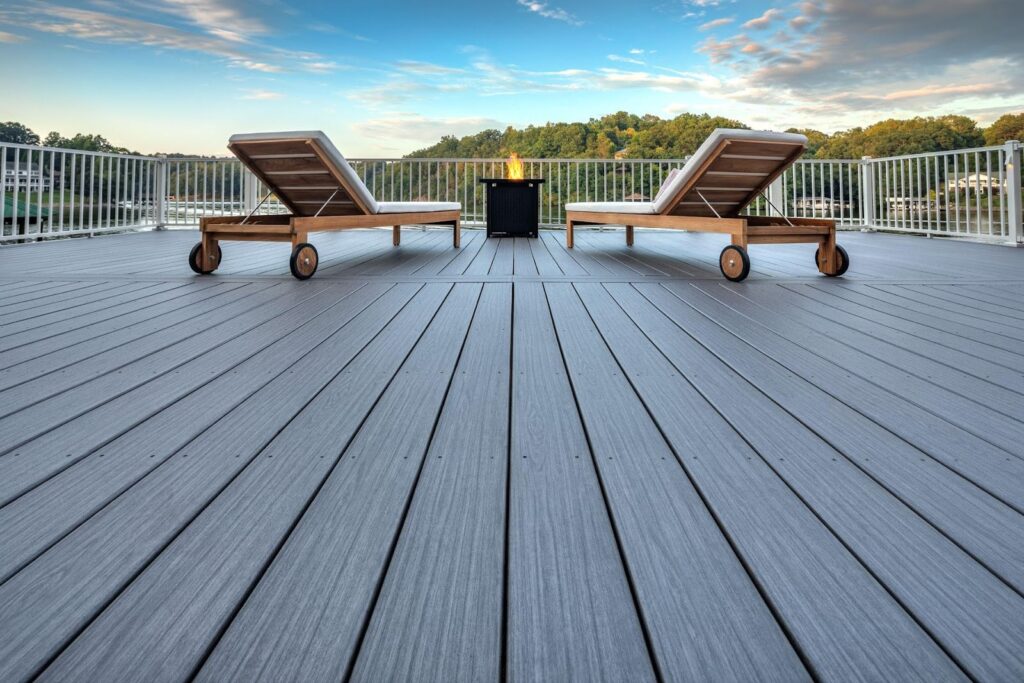
A beautiful deck is also just an outdoor platform—it’s an enlargement of your living space, a place to relax, entertain, and do business. However, on occasion, disclosing to severe weather, humidity, and heavy use can take a toll on even excellent, strong decks. When boards start to bend or the form starts to decline, homeowners face a very crucial question: Should you repair or replace your deck?
This guide explains how to label the right approach, what signs to expect, and by what method to create an economical, enduring resolution.
Signs That Your Deck Needs Attention
Here are ordinary warning signs that indicate your decoration needs professional attention:
1. Wobbly Railings or Loose Connections
Railings feel solid and secure. Loose posts or precarious balusters are a major safety hazard that shouldn’t be forgotten.
2. Rotting or Splitting Wood
Soft spots or discoloration in boards frequently mean rot has set in. Once rot reaches the frame or joists, a substitute becomes the more reliable option.
3. Rusting or Corroded Fasteners
Screws, nails, and alloy connectors rust over time, compromising fundamental strength. Corroded fasteners frequently signal that moisture has occurred, affecting the deck for years.
4. Sagging or Uneven Deck Surface
A drooping deck may indicate injured joists or foundation posts. If the support building is failing, repairs won’t be enough.
When Repair Makes Sense
Sometimes, the damage is isolated and may be resolved accompanying targeted fixes. For this purpose you can also contact https://decksforlife.ca/. Repairing your deck is often an excellent choice when:
- Only surface boards are damaged.
Replacing any boards or sanding and refinishing the surface can fix the appearance and security.
- The substructure is dependable.
If posts, beams, and joists are intact, you can replace decking boards, posts, or stairs without a full repair.
Popular Repair Solutions:
- Replacing warped or deteriorated boards
- Re-securing indefinite fasteners
- Power washing and resealing wood
- Updating posts for safety
- Repainting or staining for care and aesthetics
When Rebuilding is Needed
- Structural damage is widespread.
If rot, warping, or disintegration affects more than 20–30% of the form, replacement guarantees safety and strength.
- The deck doesn’t meet current construction codes.
Older decks often lack new safety features or proper basis depth. A restoration brings the structure up to today’s standards.
- You are going to change the design or expand.
Rebuilding allows you to add new features like lighting, included seating, or a multi-level layout—something that repairs can’t attain.
Advantages
- Opportunity to use low-maintenance elements
- Modernized design and safety improvements
- Longer lifespan and higher feature value
- Freedom to tailor-make with illumination, pergolas, or privacy screens
Conclusion
If your structure is sound and the issues are minor, repairs can replace safety and advantage affordably. But if fundamental damage or old-fashioned design limits your enjoyment—or you are going to purchase a long-lasting outside space—a filled restoration offers a better advantage in the long run.
Regular support, annual inspections, and selecting superior materials will guarantee your deck remains a cautious, elegant, and enduring part some your home for a lifetime to come.



+ There are no comments
Add yours